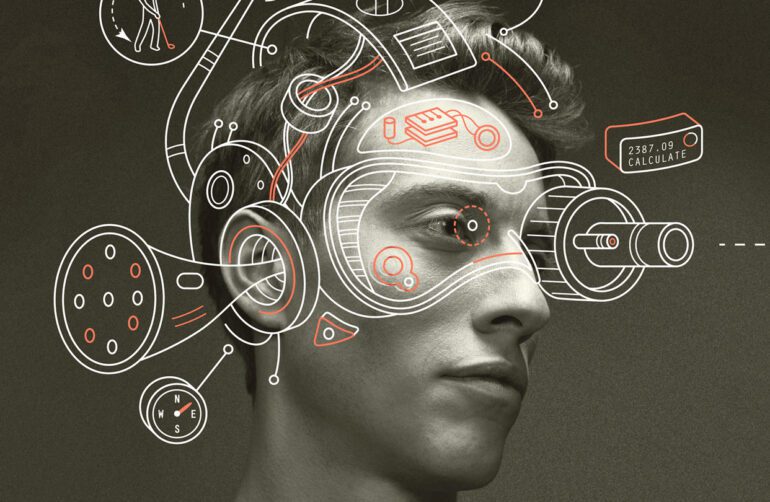TL;DR:
- Neural implants and BCIs revolutionize neuroscience and human experience.
- They enable direct brain-to-device communication for restoring function and treating neurological disorders.
- Core principles involve recording and interpreting neural activity through electrodes and algorithms.
- Advances in electrode design and machine learning enhance performance and accuracy.
- BCIs offer valuable insights into brain function and decision-making processes.
- Speculative applications include enhancing cognitive abilities and interactions with AI.
- Responsible navigation of ethical and societal concerns is crucial.
Main AI News:
Neuroscience has entered a new era with the emergence of neural implants and brain-computer interfaces (BCIs), expanding the boundaries of human experience and transforming our understanding of the mind. By establishing a direct connection between the brain and external devices, these cutting-edge technologies offer unprecedented opportunities to restore sensory and motor functions, address neurological disorders, and even augment human cognitive capacities.
At the core of neural implants and BCIs lies the ability to capture and decipher the intricate electrical signals produced by the brain’s neural network, comprised of individual units called neurons. Leveraging a combination of implanted electrodes within the brain or non-invasive scalp-based BCIs, coupled with sophisticated algorithms, these innovative systems unlock the hidden patterns of neural activity.
The resulting insights can be harnessed to exert control over external devices, ranging from a computer cursor to a robotic limb, enabling individuals to interact with their environment in remarkable ways. The journey of neural implants and BCIs has witnessed remarkable strides since their nascent development in the 1970s. Technological advancements have significantly bolstered their performance, driven by breakthroughs in electrode design and manufacturing.
In particular, the advent of thin, flexible electrode arrays has revolutionized the field by minimizing tissue damage and inflammation, augmenting the longevity and reliability of neural implants. Concurrently, machine learning and signal processing algorithms have experienced remarkable progress, substantially elevating the accuracy and speed of BCI-controlled devices.
Notably, a groundbreaking study showcased the immense potential of BCIs by empowering a paralyzed individual to achieve an astounding typing speed of 90 characters per minute, shattering previous records. Such breakthroughs pave the way for a future where those who have lost mobility may regain their ability to engage with the world through advanced BCI technologies.
Neural implants and BCIs not only offer therapeutic avenues but also unravel the intricate workings of the human brain. Through the meticulous recording of neural activity across various brain regions during different tasks and experiences, scientists gain unprecedented insights into the neural underpinnings of cognition, perception, and emotion.
For instance, recent research utilized a BCI to delve into the neural mechanisms behind decision-making. Astonishingly, the scientists discovered that specific patterns of neural activity foretold an individual’s forthcoming choice, even before the individual was consciously aware of it. Such findings illuminate the enigmatic realm of the human mind, shedding light on the mysterious interplay between the brain and our thoughts and actions.
Undoubtedly, the prospects of neural implants and BCIs extend beyond therapeutic boundaries, sparking both speculation and controversy. Notable entrepreneur Elon Musk, through his company Neuralink, envisions the development of high-bandwidth BCIs capable of enhancing cognitive abilities such as memory and attention. Musk even envisions futuristic prospects like telepathy and direct interaction with artificial intelligence becoming feasible.
While these visions currently exceed our technological capabilities, they underscore the transformative potential of neural implants and BCIs in shaping the human experience. As these technologies continue to progress, the intersection of neuroscience, engineering, and computer science offers tantalizing prospects and holds power to reshape not only our comprehension of the brain but also the very fabric of human existence.
Nevertheless, the advancement of neural implants and BCIs necessitates a thoughtful exploration of the ethical and societal implications they entail. Responsible navigation of these uncharted territories is paramount as we push the boundaries of our capabilities and confront the profound questions these advancements raise.
Conclusion:
The rapid progress in neural implants and BCIs signifies a significant advancement in neurotechnology. This transformative innovation not only empowers individuals by restoring sensory and motor functions but also provides profound insights into the workings of the human brain. The enhanced accuracy and speed of BCIs, combined with potential cognitive enhancements, open up new horizons for various markets. Industries related to healthcare, assistive technologies, and human-machine interfaces are poised to benefit significantly from these developments. However, it is essential to approach these advancements with careful consideration of ethical and societal implications to ensure a responsible and inclusive integration of neural implants and BCIs into the market.

